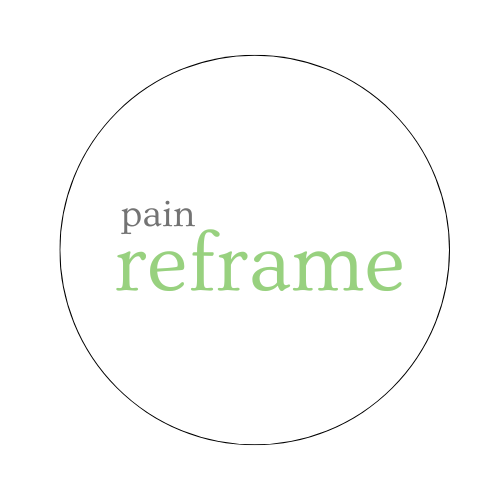Living with chronic back pain can be incredibly challenging. One of the most powerful tools at your disposal for managing and alleviating chronic back pain is learning how to move well.
When it hurts to walk, stand or bend, it’s tempting to lie down for prolonged periods of time and avoid movement. In the majority of cases – this is the wrong approach. It is likely that the best approach to speeding up your recovery involves movement.
Sit Less, Move More
A key contributor to chronic back pain is prolonged sitting. Simply resting too much and avoiding activity can make your sensitivity worse, reducing your threshold for tolerating pain and stress 1.
Exercise is an effective treatment for chronic low back pain 2–10
For most people, recovering from persistent or recurrent back pain requires an interdisciplinary or holistic approach. Helpful elements to consider include:
- Adding movement (move frequently)
- Exercising 1
- Resuming meaningful activities
- Learning about pain 11
- Reflecting on your mindset
- Practicing mindfulness 12–17
- Addressing lifestyle factors (sleep hygiene, smoking cessation, stress management, etc) 18
Combining two or more of these approaches has been shown to be even more successful than any one single approach 1,4,5,18–23.
Your Pain Can Change
Chronic pain brings (undesirable) changes in many systems of your body such as reduced muscle strength, depressed mood, sensitive nervous system, triggered immune system and less flexible joints. One way to improve in these systems is to stress yourself in positive ways 1,23. This can be done with exercise, whereby you might gradually increase your strength, improve your mood, relax, and increase your range of movement. You are able to do this because you a have the ability to adapt 1, slowly building your resiliency and turning down your sensitivity threshold.
What Are The Best Exercises for Chronic Back Pain?
Walking, dancing, swimming, stretching, yoga, Pilates (and many other activities) may help to reduce stiffness, which is associated with reduced back pain 24. Gradually moving more and even adding some light resistance can help build endurance, strength and reduce your sensitivity. However, there is little evidence that one specific types of exercise is superior to others 9,25.
Your choice of exercise for chronic back pain should probably depend on your preferences 9,26,27, access, costs and convenience. Although basic exercise like walking 28 and cycling 29 have shown great long term benefits in comparison to specific ‘core-stabilising’ 25,30, Pilates 29 and strength training.
Movement Matters
It can be worthwhile to approach your movement practice with optimism, relaxation and patience.
Practice mindfulness during your movements. This means paying attention to your breathing, how your body feels during movement and even how your surroundings sound and feel. try softening your shoulders and BREATHE (do not hold your breath).
Seek Professional Guidance
While these ideas can provide a solid foundation for moving with chronic back pain, it can be helpful to consult with healthcare professionals. Consult with a knowledgeable healthcare provider who understands the value of movement, and holistic approaches. This can be especially supportive if you want guidance on choosing the right movement for you and an appropriate intensity to get started with.
Rest and Recovery
Rest and recovery are essential components of any movement practice. Overtraining can exacerbate back pain, so ensure you give your body the time it needs to heal and regenerate. Incorporate rest days into your routine, prioritize sleep, and consider modalities like yoga or foam rolling for recovery.
Getting Started with Physical Activity
Many different types of movement and exercise can have positive effects on chronic back pain. No one type seems to be superior for everyone.
- Find an activity you want to do. Rarely is anything off limits – feel free to experiment and see how you respond.
- Warm up well and ease yourself into your activity.
- Move frequently and pace yourself
- Relax while moving: try softening your shoulders and BREATHE (do not hold your breath).
- Take it a step further and practice mindfulness during your movements. This means paying attention to your breathing, how your body feels during movement and even how your surroundings sound, smell and feel.
References
- Lehman, G. Recovery Strategies, pain guidebook. (2017).
- Rainville, J., Nguyen, R. & Suri, P. Effective conservative treatment for chronic low back pain. in vol. 21 257–263 (Elsevier, 2009).
- Tian, S. & Zhao, D. Comparative effectiveness of exercise interventions for low back pain: a systematic review and network meta-analysis of 41 randomised controlled trials. The Lancet 392, S21 (2018).
- Exercise and Chronic Low Back Pain. International Association for the Study of Pain (IASP) https://www.iasp-pain.org/resources/fact-sheets/exercise-and-chronic-low-back-pain/.
- O’Connell, N. E., Cook, C. E., Wand, B. M. & Ward, S. P. Clinical guidelines for low back pain: a critical review of consensus and inconsistencies across three major guidelines. Best practice & research Clinical rheumatology 30, 968–980 (2016).
- Van Middelkoop, M. et al. Exercise therapy for chronic nonspecific low-back pain. Best practice & research Clinical rheumatology 24, 193–204 (2010).
- Hayden, J. A., Van Tulder, M. W., Malmivaara, A. V. & Koes, B. W. Meta-analysis: exercise therapy for nonspecific low back pain. Annals of internal medicine 142, 765–775 (2005).
- Fernández-Rodríguez, R. et al. Best Exercise Options for Reducing Pain and Disability in Adults With Chronic Low Back Pain: Pilates, Strength, Core-Based, and Mind-Body. A Network Meta-analysis. Journal of Orthopaedic & Sports Physical Therapy 52, 505–521 (2022).
- Malfliet, A. et al. Best Evidence Rehabilitation for Chronic Pain Part 3: Low Back Pain. J Clin Med 8, 1063 (2019).
- Owen, P. J. et al. Which specific modes of exercise training are most effective for treating low back pain? Network meta-analysis. Br J Sports Med 54, 1279–1287 (2020).
- Moseley, Lorimer & Butler, David. Explain Pain. (Noigroup Publications, 2003).
- Becker, J., McIsaac, T. & Cohen, R. Exercise vs. Mindful Movement for Chronic Neck Pain. Archives of Physical Medicine and Rehabilitation 99, e200–e201 (2018).
- Sohl, S. J. et al. A randomized pilot of eHealth mindful movement and breathing to improve gynecologic surgery outcomes. Journal of Psychosocial Oncology 41, 251–266 (2023).
- Kabat-Zinn, J. Mindfulness Meditation for Pain Relief: Practices to Reclaim Your Body and Your Life. (Sounds True, 2023).
- Cherkin, D. C. et al. Effect of Mindfulness-Based Stress Reduction vs Cognitive Behavioral Therapy or Usual Care on Back Pain and Functional Limitations in Adults With Chronic Low Back Pain: A Randomized Clinical Trial. JAMA 315, 1240–1249 (2016).
- Esmer, G., Blum, J., Rulf, J. & Pier, J. Mindfulness-Based Stress Reduction for Failed Back Surgery Syndrome: A Randomized Controlled Trial. Journal of Osteopathic Medicine 110, 646–652 (2010).
- Gardner-Nix, J., Backman, S., Barbati, J. & Grummitt, J. Evaluating distance education of a mindfulness-based meditation programme for chronic pain management. J Telemed Telecare 14, 88–92 (2008).
- Lewis, J. & O’Sullivan, P. Is it time to reframe how we care for people with non-traumatic musculoskeletal pain? Br J Sports Med 52, 1543–1544 (2018).
- Sany, S. A., Mitsi, M., Tanjim, T. & Rahman, M. The effectiveness of different aerobic exercises to improve pain intensity and disability in chronic low back pain patients: a systematic review. Preprint at https://doi.org/10.12688/f1000research.75440.1 (2022).
- Moseley, G. L. A pain neuromatrix approach to patients with chronic pain. Manual therapy 8, 130–140 (2003).
- Nijs, J. et al. A Modern Neuroscience Approach to Chronic Spinal Pain: Combining Pain Neuroscience Education With Cognition-Targeted Motor Control Training. Physical Therapy 94, 730–738 (2014).
- Hall, A. et al. Physiotherapist-delivered cognitive-behavioural interventions are effective for low back pain, but can they be replicated in clinical practice? A systematic review. Disability and Rehabilitation 40, 1–9 (2018).
- Brumagne, S., Diers, M., Danneels, L., Moseley, G. L. & Hodges, P. W. Neuroplasticity of Sensorimotor Control in Low Back Pain. J Orthop Sports Phys Ther 49, 402–414 (2019).
- Falla, D., Gizzi, L., Tschapek, M., Erlenwein, J. & Petzke, F. Reduced task-induced variations in the distribution of activity across back muscle regions in individuals with low back pain. Pain 155, 944–953 (2014).
- Smith, B. E., Littlewood, C. & May, S. An update of stabilisation exercises for low back pain: a systematic review with meta-analysis. BMC Musculoskelet Disord 15, 416 (2014).
- Hayden, J. A., Ellis, J., Ogilvie, R., Malmivaara, A. & van Tulder, M. W. Exercise therapy for chronic low back pain. Cochrane Database Syst Rev 9, CD009790 (2021).
- Saragiotto, B. T. et al. Motor control exercise for chronic non-specific low-back pain. Cochrane Database Syst Rev CD012004 (2016) doi:10.1002/14651858.CD012004.
- Shnayderman, I. & Katz-Leurer, M. An aerobic walking programme versus muscle strengthening programme for chronic low back pain: a randomized controlled trial. Clin Rehabil 27, 207–214 (2013).
- Marshall, P. W. M., Kennedy, S., Brooks, C. & Lonsdale, C. Pilates exercise or stationary cycling for chronic nonspecific low back pain: does it matter? a randomized controlled trial with 6-month follow-up. Spine (Phila Pa 1976) 38, E952-959 (2013).
- Wang, X.-Q. et al. A Meta-Analysis of Core Stability Exercise versus General Exercise for Chronic Low Back Pain. PLoS One 7, e52082 (2012).




0 Comments